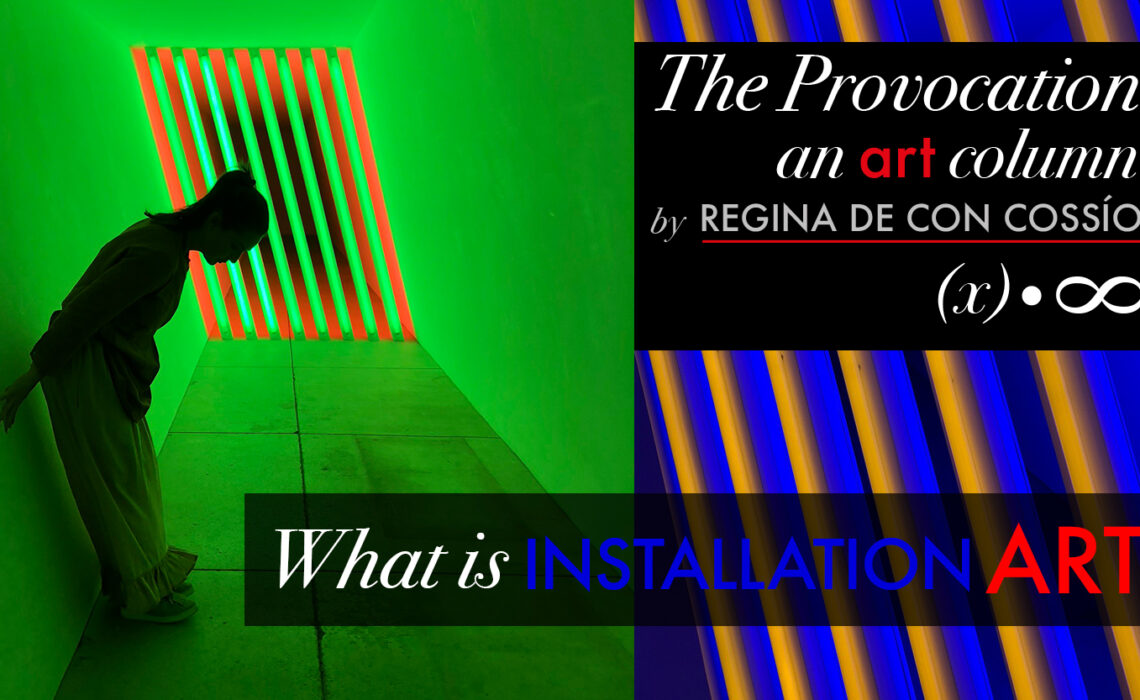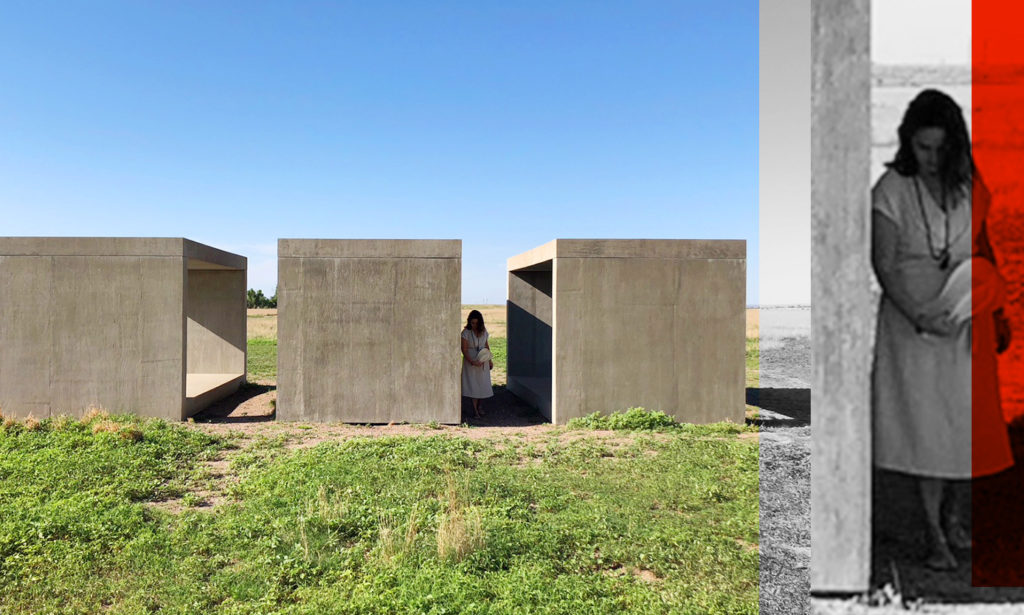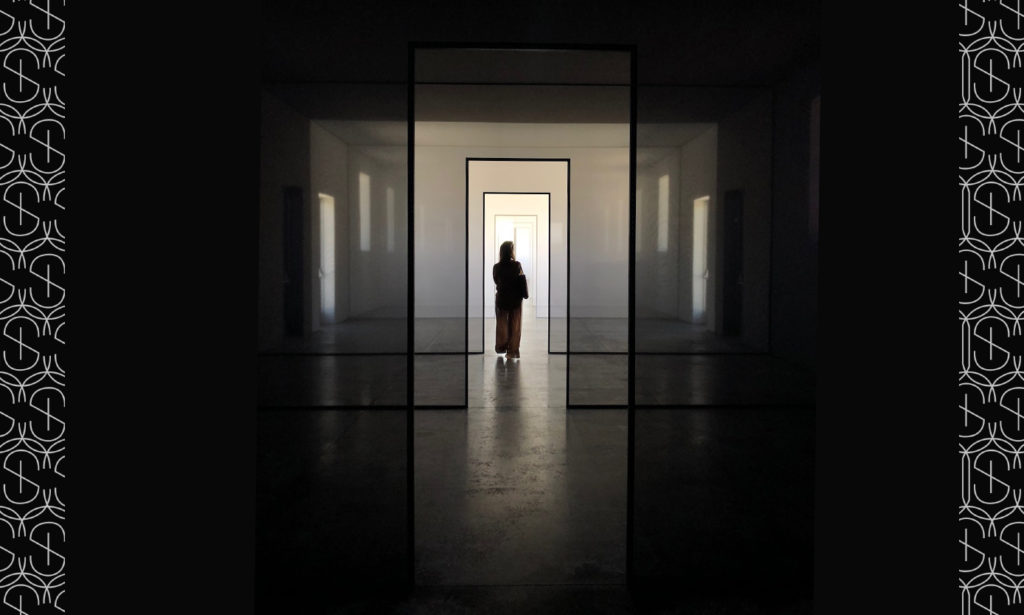
Installation Art—The Location or the Artwork?
Photo Courtesy of Sybaris Collection
In a proverbial “the chicken or the egg” conundrum, installation art leads scholars to ask “is it the art itself or the location of the art” which makes it installation? No matter how you look at, installation art is often “larger than life” and simply has that WOW factor. One of the key factors which distinguishes this type of work from most others is the experience viewers have when viewing installation art. This ability to see the art from multiple angles, the variations across a surface, often provide a breathtaking encounter for art appreciators. Let’s delve more into installation art.
What is Installation Art?
In its most basic sense, installation art is a work (or works) of art INSTALLED into a space. Installation art can encompass any (and many) types of media, in combinations difficult to create in any other genre. Although it doesn’t have to be large, most installation art works are produced specifically for the location they are to be displayed in, allowing for large scale.
Installation art is known for the feeling they create—due to the space it fills, the audience it is created for, or a culture or event it represents. Installation are moves away from just something “pretty” or “artistic” to making a statement related to the space or visitors themselves. It can be borne out of an artist’s experience, support an opinion, or even represent an event the artist wants to draw attention to. He or she may be trying to influence spectators about theory, emotion, or just surprise them, pulling them out of their comfort zone and changing their perceptions.
Photo Courtesy of Sybaris Collection
Installation art can encompass many methods of art in one singular, or groupings of, works of art. La Joute, created in 1970 by artist Jean-Paul Riopelle, combines bronze, water, and fire in this breathtaking outdoor piece which is displayed in the Quarter International de Montreal. Many installation pieces (termed “site-specific installation art”) have a connection to the site in which they are exhibited, like Kara Walker’s “A Subtlety or the Marvelous Sugar Baby”, a gigantic sphynx-like figure representing a slave woman, placed inside of a demolished Domino Sugar factory. Its location is paramount to the story it tells and if moved to another location, the statement and its potential impact is lost. Additionally, artists may place restrictions/conditions on site-specific art, preventing the works from being dismantled and placed elsewhere.
History
Installation art is a relatively young genre of art, having been acknowledged (and accepted) only during the last 60 years. Marcel Broodthaers is considered the father of installation art. Using what was considered strange materials in the 1960’s, he created unique concepts which challenged the art community at the time, even with the blossoming Dadaism, Surrealism and Futurism movements.
This growth came at a time ripe for a shake up, with the world in political, social, and economic upheaval and the at world being challenged by many who wanted to move away from modern works, abandoning painting and sculpture as historically used. No longer was at viewed from a singular experience or point of view which was not affected by its location, but installation artwork was seen from multiple perspectives, offering many points of view and influenced by its surroundings. Additionally, materials could be used outside of their normal service, i.e. a toilet seat placed in a work of art by Marcel Duchamp (link to related blog).
In 1962, Allen Kaprow created a true multi-media masterpiece in NYC’s Smolin Gallery with “Words,” ushering in a new era with his immersive concept. Containing paper, lights, chalk, bed sheets, and even audio, visitors were invited to “experience” the display, writing their own words (no pun intended) and leaving the display having experienced something truly unique.
Famous Artists and Their Notable Works
These famous artists shared something key to many installation artists and works: the desire to make a statement, to champion an attitude or viewpoint which was not easy to share at the time.
Marcel Duchamp: Le grand verre, 1923. Also known by the title “The Bride Stripped Bare by Her Bachelors” is a freestanding work with glass plates exhibiting two, seemingly unrelated, scenes. The artist claimed that the work remained unfinished and provided notes which indicated further additions to the work. He offered those to be read by viewers so they could imagine how the finished wok would have appeared.
Photo Courtesy of Sybaris Collection
Judy Chicago: The Dinner Party, 1979. This controversial work is considered the first example of feminist art and was received with scathing reviews and utter horror by some. His elaborate display combined tile work, painting, and several examples of intricate needlework, and showcases 39 female leaders throughout history. Despite the initial (and in some examples, ongoing) negative responses, the exhibit traveled the world for years before being placed on permanent display at the Elizabeth A.Sckler Center for Feminist Art at the Brooklyn Museum in 1996.
Damien Hirst: The Physical Impossibility of Death in the Mind of Someone Living, 1991. Showcasing the fragility of life combined with the macabre nature of death, preserved, Hirst shocked audiences in the 1990’s but gained popularity with the financial support of Charles Saatchi, in his second of several displays of dead (but preserved) animals. There is no doubt that the trailblazers who rose before him laid the path of success for Hirst.
Recent Installation Artists & Works
Why Installation Art?
Designed to engage viewers, often from several angles/multiple perspectives, installation art combines the “wow” factor expressed in large scale works and the contemplative factor of works which challenge viewers to think.
Further, installation art begs us to question: Is all art designed to be purchased and displayed somewhere else? If a piece is taken down and rebuilt somewhere else, is it the same—does it invoke the same feelings? How can a piece be valued when it is not able to be purchased and moved? Installation art has truly been pivotal in changing attitudes about what can be considered art and how it can be displayed and shared.




